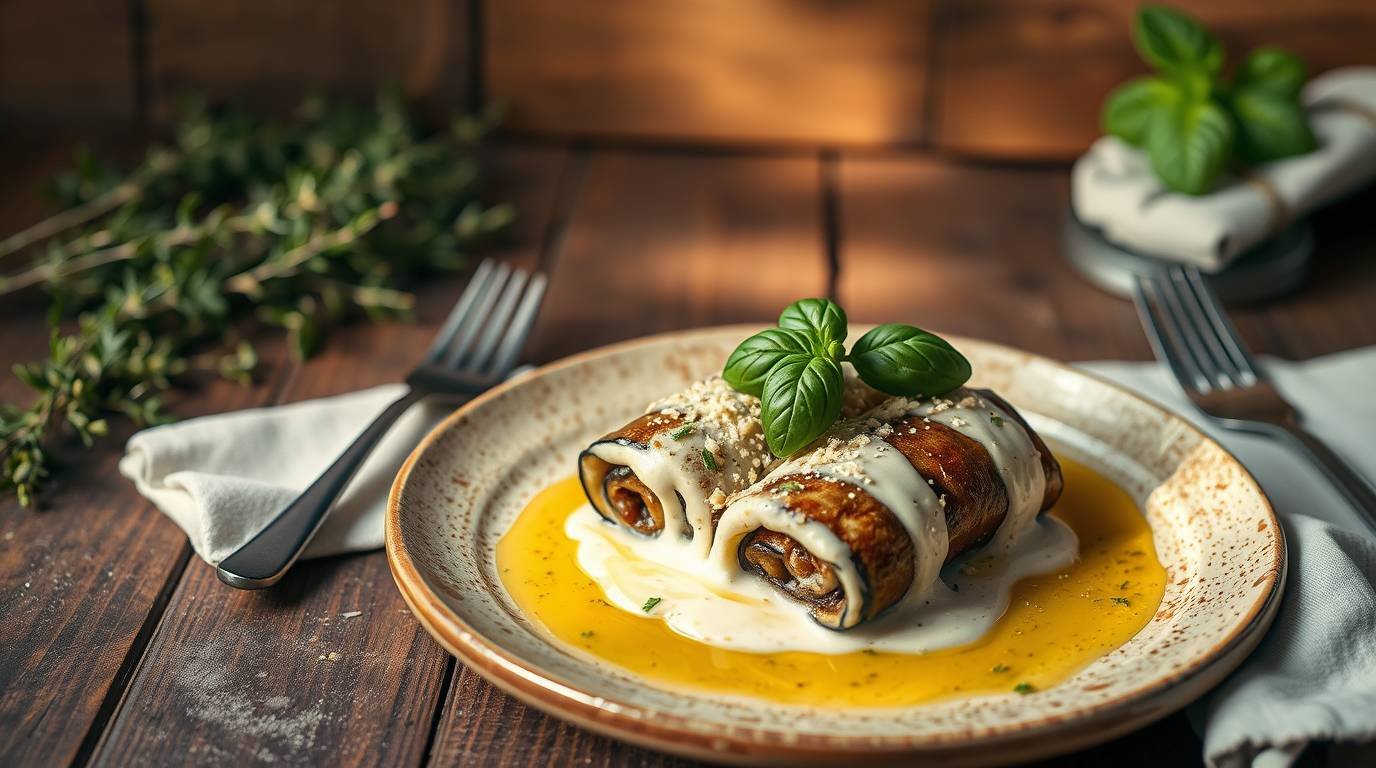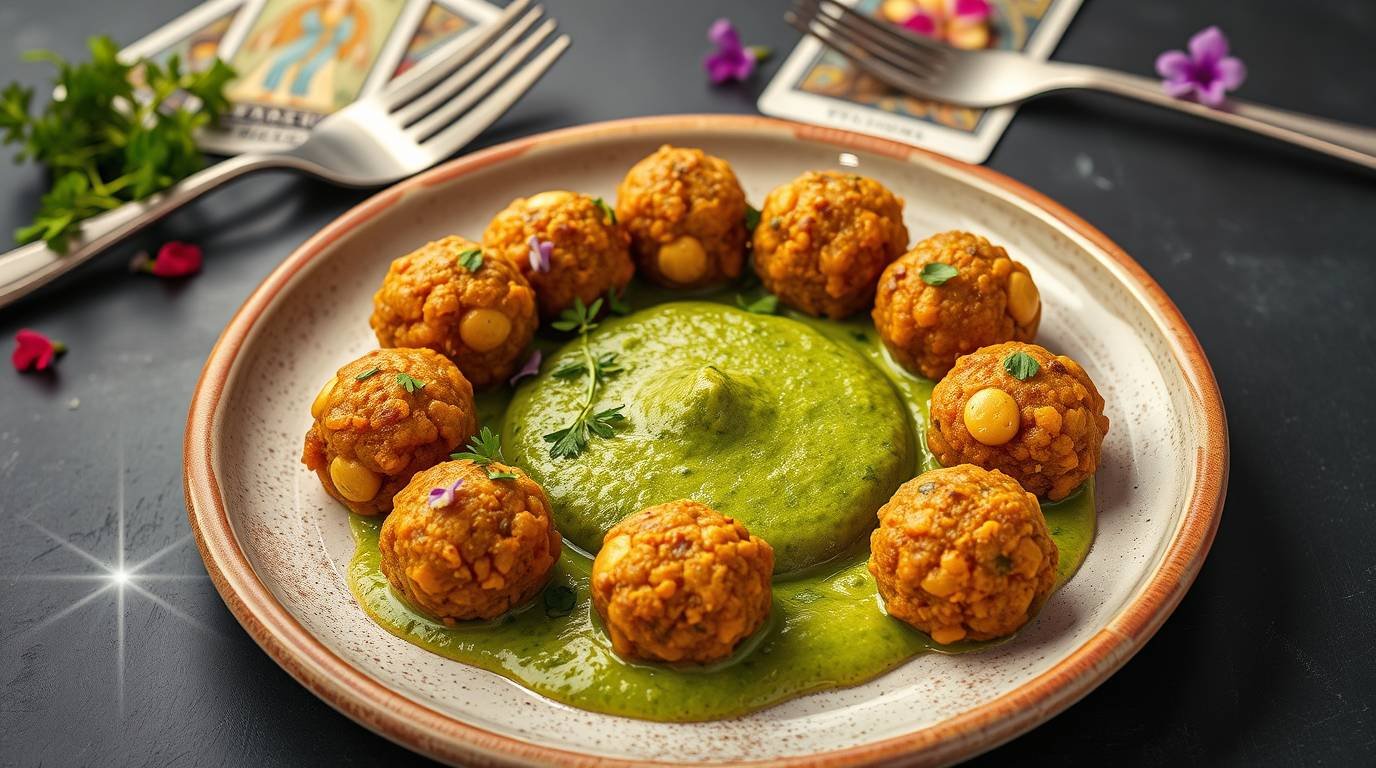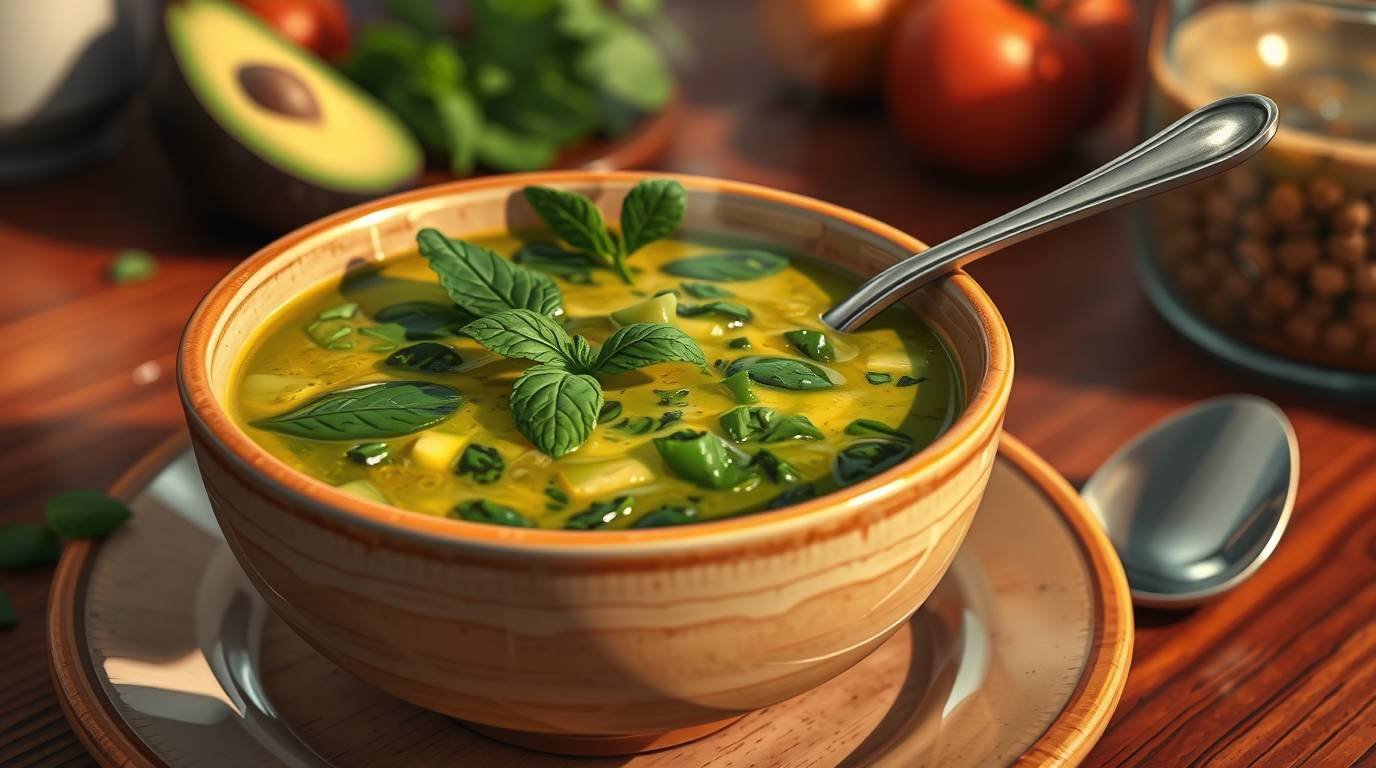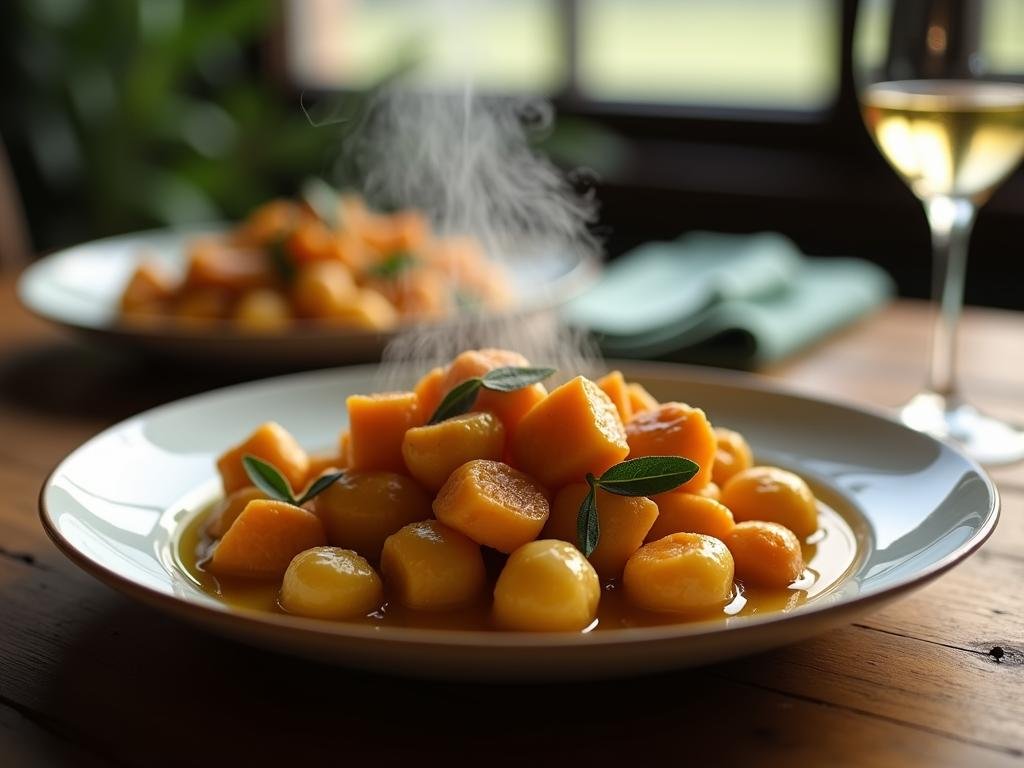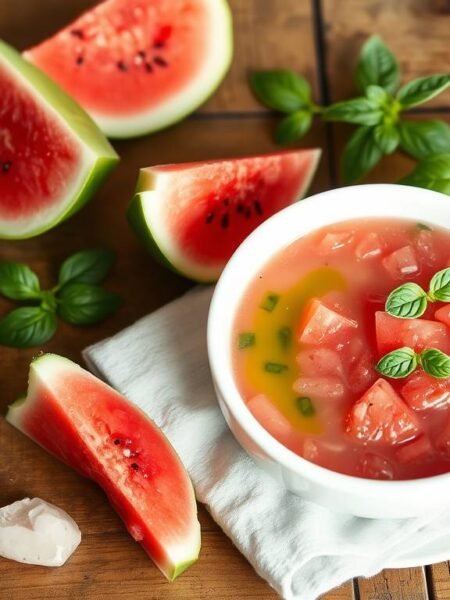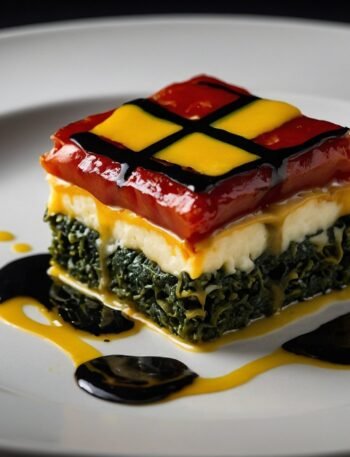Easy and Authentic Vegetarian Pho Recipe
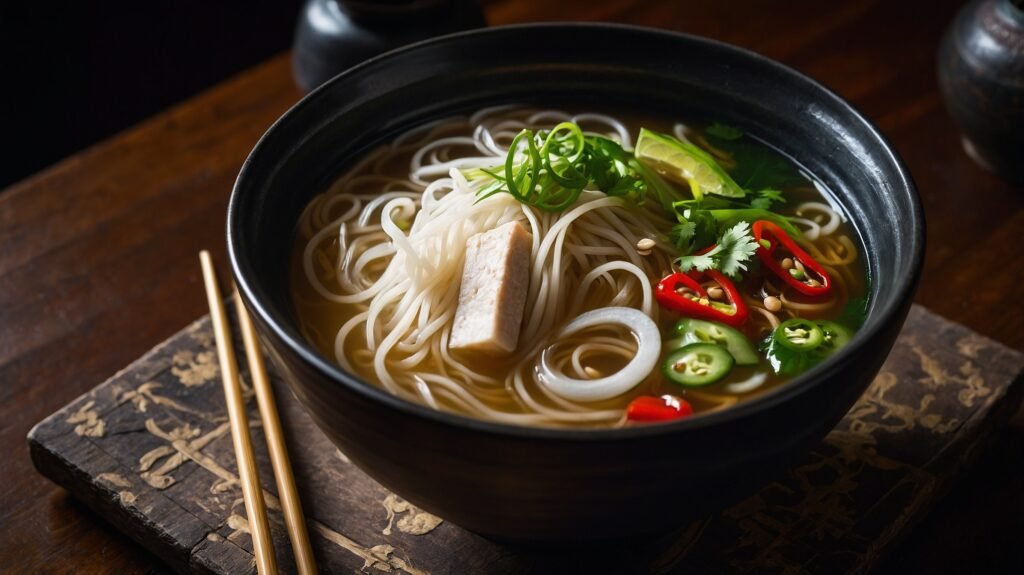

Vegetarian Pho, a warm and fragrant noodle soup, is a delightful culinary experience that transports you straight to the bustling streets of Vietnam. This dish is more than just a meal; it’s an embrace in a bowl. It celebrates flavors and aromas that come together to create a comforting, nourishing broth.
With its delicate rice noodles, vibrant herbs, and earthy spices, this easy and authentic vegetarian version captures the essence of traditional pho. It offers a plant-based twist that anyone can enjoy.
🃏 Tarot Insights
Card 1: The Temperance (Upright)
Theme: Balance, Harmony, Healing
Temperance reflects the blending of opposites—just as your pho combines fire-roasted aromatics, earthy spices, and water-based broth to achieve unity and depth. This card encourages mindful preparation, balancing strong and gentle flavors, and allowing all components to harmonize. The simmering process becomes an alchemical act.
Card 2: The Star (Upright)
Theme: Nourishment, Hope, Restoration
The Star is the healing light after a long journey. Your pho provides physical and energetic nourishment—warmth, hydration, and peace. It invites the eater to slow down and feel replenished. This card reminds you to infuse intention into the broth—it becomes an elixir of renewal.
Card 3: The Hierophant (Reversed)
Theme: Personal Tradition, Breaking Conventions
Pho is typically made with beef bones, but your vegetarian version honors tradition while rewriting the rules—much like the reversed Hierophant. This card speaks to culinary innovation grounded in spiritual values. You’re passing on a new sacred recipe that aligns with compassion and wellness.
✨ Magickal Insights
- Elemental Magick:
This pho embodies all four elements:- Fire: Roasting ginger and onion—purifying and activating.
- Water: Broth base—emotional nourishment and flow.
- Air: Aromatic spices—cinnamon, star anise, and clove—invoking clarity and ancient memory.
- Earth: Herbs and vegetables—grounding and restoring the body.
- Kitchen Spellwork:
Stir the broth clockwise while chanting a short haiku (or incantation) to imbue it with restorative energy: Steam of stars arise,
Roots and spice in sacred dance,
Body, soul, and breath. - Magical Intention:
Set your intention as you strain the broth—visualize it as a liquid crystal of healing energy. You can whisper your purpose: “I call in warmth, balance, and inner peace.”
🕉️ Chakra Insights
- Root Chakra (Muladhara):
The warm, spiced broth grounds and comforts, helping to restore a sense of safety and stability. Earthy ingredients like roasted vegetables and star anise support this base energy center. - Solar Plexus Chakra (Manipura):
The fragrant spices ignite this chakra, fueling confidence and digestive fire. Cooking and eating this pho mindfully helps rekindle your inner power and self-healing energy. - Heart Chakra (Anahata):
The love put into making broth from scratch activates compassion. Sharing a bowl of pho becomes a sacred act of heart-based connection and kindness, especially in its vegetarian form.
Easy and Authentic Vegetarian Pho Recipe
Description
This vegetarian pho is a delightful blend of aromatic spices, fresh vegetables, and rice noodles, creating a warm, nourishing dish that's both satisfying and healthy.
Ingredients
Vegetarian Pho Ingredients
Instructions
Preparing the Broth
-
Roasting the Aromatics
Preheat your oven to 400°F (200°C). Spread the onion and ginger on a baking sheet and roast for about 20-25 minutes until they are caramelized and fragrant. This step builds a deep, rich flavor base for your broth.Don’t skip roasting! It’s the secret to a flavorful broth. -
Simmering the Broth
In a large pot, combine the roasted onion and ginger, vegetable stock, star anise, cinnamon stick, cloves, and salt. Bring to a boil, then reduce to a simmer for at least 30 minutes to allow the flavors to meld beautifully.If you want a stronger flavor, simmer for up to an hour. Just keep an eye on it!
Preparing the Noodles and Toppings
-
Cooking the Rice Noodles
While the broth simmers, cook the rice noodles according to the package instructions. Drain and rinse them under cold water to stop the cooking process and prevent clumping.Make sure not to overcook the noodles; they should be al dente. -
Preparing Fresh Toppings
Thinly slice the mushrooms, jalapeño, and green onions. Chop the cilantro and basil. Set all your fresh toppings aside so they’re ready to go when the broth is done.Feel free to mix and match your favorite toppings for a personal touch!
Assembling the Pho
-
Straining the Broth
Once the broth has simmered to perfection, strain it through a fine-mesh sieve into a clean pot to remove the spices and solids. This will give you a smooth, clear broth.Press down on the solids to extract every last drop of flavor! -
Building Your Bowl
In a serving bowl, place a generous portion of cooked rice noodles. Pour the hot broth over the noodles, then artfully arrange your fresh toppings on top. Add a squeeze of lime for brightness.Don’t be shy with the toppings; they’re what make it fun and flavorful!
Enjoying Your Pho
-
Serving the Pho
Serve your vegetarian pho immediately, garnished with extra herbs and lime wedges on the side. Encourage everyone to customize their bowls with chili sauce or hoisin for added depth.Pho is best enjoyed hot and fresh, so dig in right away!
Nutrition Facts
Servings 4
- Amount Per Serving
- Calories 123.68kcal
- % Daily Value *
- Total Fat 3.29g6%
- Saturated Fat 0.39g2%
- Sodium 1889.07mg79%
- Potassium 195.58mg6%
- Total Carbohydrate 19.77g7%
- Dietary Fiber 4.82g20%
- Sugars 7.25g
- Protein 7.5g15%
- Vitamin A 1318.46 IU
- Vitamin C 20.8 mg
- Calcium 147.55 mg
- Iron 2.13 mg
- Vitamin E 0.39 mg
- Vitamin K 26.94 mcg
- Thiamin 0.06 mg
- Riboflavin 0.06 mg
- Niacin 0.49 mg
- Vitamin B6 0.11 mg
- Folate 27.98 mcg
- Pantothenic Acid 0.27 mg
- Phosphorus 42.62 mg
- Magnesium 21.55 mg
- Zinc 0.38 mg
- Selenium 0.94 mcg
- Copper 0.13 mg
- Manganese 0.88 mg
* Percent Daily Values are based on a 2,000 calorie diet. Your daily value may be higher or lower depending on your calorie needs.
Note
- Use a mix of fresh herbs like Thai basil, cilantro, and mint for a fragrant finish.
- For a deeper flavor, toast the spices (star anise, cloves, cinnamon) in a dry pan before adding them to the broth.
- Add a splash of soy sauce or tamari for an umami kick, especially if you're using vegetable broth.
- If you want a bit of heat, consider adding sliced jalapeños or a drizzle of sriracha.
- Rice noodles can be replaced with zucchini noodles or other gluten-free options for a lighter dish.
- If you prefer a richer broth, simmer the vegetable stock longer and add dried mushrooms for an earthy depth.
- Make sure to soak the rice noodles in warm water until just tender before adding them to the soup to avoid overcooking.
- Leftover broth can be refrigerated for up to a week or frozen for up to three months; just reheat and add fresh ingredients when you're ready to enjoy it again.
- Customize your bowl with extra toppings like bean sprouts, lime wedges, or hoisin sauce to enhance the flavor profile.
- This dish is naturally vegan and gluten-free, making it versatile for various dietary preferences.
Summing Up the Pho Experience
When you take your first sip of this Easy and Authentic Vegetarian Pho, you’re not just tasting a bowl of soup; you’re embracing a symphony of flavors that dance on your palate. The fragrant broth, the delicate rice noodles, and the fresh herbs come together to create a comforting experience that warms the soul. It reminds me of rainy days spent curled up with a good book, the steam swirling around me, or bustling evenings with friends gathered around the table, each of us customizing our bowls to our heart's content.
Serving Suggestions and Storage Tips
This dish is incredibly versatile; feel free to serve it with a platter of fresh herbs, lime wedges, and chili slices, letting everyone personalize their bowl for that extra zing. If you find yourself with leftovers, rejoice! This pho keeps well in the fridge for up to three days. Just store the broth separately from the noodles and toppings to maintain their texture. When reheating, a splash of water can revive the broth’s vibrancy.
Embrace Your Culinary Adventure
I encourage you to dive into this recipe and make it your own. Experiment with different vegetables or add your favorite proteins if you’re feeling adventurous. Each variation is a new journey! If you have questions or want to share your own twists, I’d love to hear about your experiences in the comments. Cooking is a journey best shared, and your take on this vegetarian pho could inspire someone else in our vibrant cooking community. Enjoy every slurp!
Tag tarot_mistical_lab/ if you made this recipe.
Frequently Asked Questions
How can I store the leftovers?
Leftovers can be stored in an airtight container in the fridge for up to 3 days. Reheat thoroughly before serving.
Can I substitute an ingredient?
Absolutely! You can swap out the tofu for tempeh or mushrooms for added umami.
What should I serve this with?
Serve with fresh herbs like basil, cilantro, and lime wedges for that authentic zing.
Is this recipe gluten-free?
Yes, just make sure to use gluten-free soy sauce or tamari.
Can I make this ahead of time?
Yes, you can prepare the broth a day in advance. Just reheat and add fresh ingredients before serving.
Hello, beautiful people! I am Marco DeLuca, Mystic Chef.
Master Chef • Tarot Grandmaster • Rune Caster
Crafting recipes that blend magick, flavor, and soul.
You may also like...


Sweet Potato & Lentil Shepherd’s Pie – Hearth of the Hermit




